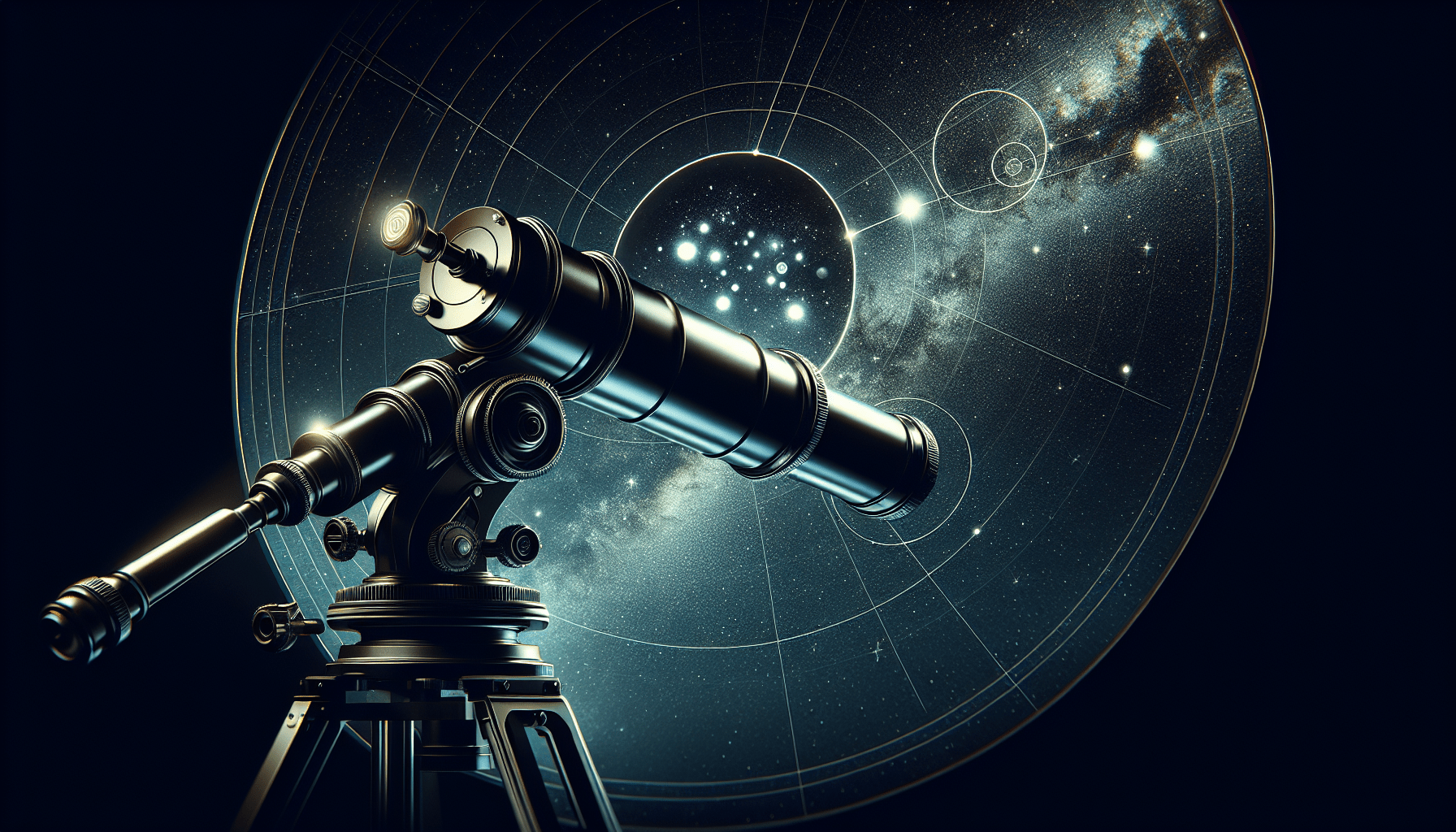The article titled “Is 200X Magnification Suitable for Telescope Viewing?” aims to explore the effectiveness of 200X magnification for telescope viewing. This inquiry delves into the question of whether or not such a magnification level is indeed suitable for optimal viewing through a telescope. By scrutinizing the potential advantages and limitations of 200X magnification, this article seeks to provide valuable insights for amateur astronomers and stargazers alike.

Table of Contents
Optimal Magnification for Telescope Viewing
Understanding Magnification
Magnification refers to the ability of a telescope to make objects appear larger and closer. It is a crucial factor in determining the level of detail that can be observed.
Factors Affecting Optimal Magnification
Several factors come into play when determining the optimal magnification for telescope viewing. These factors include the telescope’s aperture, focal length, and the atmospheric conditions during observation.
Importance of Finding the Right Magnification
Finding the right magnification is vital for a satisfying observing experience. Using too low a magnification may result in lack of detail, while using too high a magnification may result in a loss of brightness and image clarity. It is essential to strike a balance to achieve optimum viewing conditions.
Exploring 200X Magnification
What 200X Magnification Means
A telescope with 200X magnification will make the observed objects appear 200 times larger than what can be seen with the naked eye. This level of magnification can bring out finer details on the surface of celestial bodies, such as the Moon and planets.
Pros of Using 200X Magnification
Using 200X magnification can offer several benefits to astronomers. It allows for increased resolution and can reveal intricate features on celestial objects. This level of magnification is particularly well-suited for observing planets, as it can bring out their atmospheric details and surface features.
Cons of Using 200X Magnification
Despite its advantages, 200X magnification may not always be ideal for telescope viewing. One of the main drawbacks is the loss of brightness and image stability at higher magnifications. Additionally, using 200X magnification may require high-quality optics and excellent atmospheric conditions to achieve optimal results.
Is 200X Magnification Suitable for Telescope Viewing?
Considering Telescope Type
Refractor Telescopes
Refractor telescopes use lenses to gather and focus light. They are known for their crisp image quality and are well-suited for observing planets and the Moon. When considering magnification, refractor telescopes can usually handle higher levels without significant loss of image quality.
Reflector Telescopes
Reflector telescopes utilize mirrors to gather and focus light. They generally offer larger apertures and are suitable for observing deep sky objects. Reflector telescopes can also handle higher magnifications but may require additional considerations, such as image quality and collimation.
Compound Telescopes
Compound telescopes, also known as catadioptric telescopes, combine lenses and mirrors to achieve compact designs. They offer versatility and are suitable for various observing purposes. When it comes to magnification, compound telescopes can generally handle a range of magnifications but may require additional accessories for optimal results.
Effects on Image Quality
Achieving Optimum Image Clarity
To achieve optimum image clarity, it is crucial to find the right balance between magnification and image brightness. Using excessively high magnifications beyond the capabilities of the telescope or atmospheric conditions can lead to image degradation and reduced clarity.
Balancing Magnification and Image Brightness
Higher magnifications can dim the image, making it harder to discern details, particularly in faint objects. It is important to consider the telescope’s aperture and the availability of dark skies when choosing magnification levels. If the telescope has a larger aperture, higher magnifications may be viable for capturing finer details while maintaining image brightness.
Understanding Image Stability
At higher magnifications, even slight atmospheric disturbances can significantly impact image stability. This can result in a shimmering or blurry view, making it difficult to observe fine details. It is crucial to assess local atmospheric conditions and stability when considering higher magnifications.

Suitability for Astronomical Observations
Observing the Moon and Planets
200X magnification can be highly suitable for observing the Moon and planets. It allows for closer examination of lunar craters, mountain ranges, and the intricate cloud patterns on gas giants like Jupiter and Saturn. The higher magnification enables astronomers to explore such celestial bodies in greater detail.
Exploring Deep Sky Objects
When it comes to deep sky objects, such as galaxies, nebulae, and star clusters, 200X magnification may not provide the desired level of detail. Deep sky objects typically require wider fields of view and lower magnifications to capture their full extent. However, there may still be instances where 200X magnification could be useful for studying particular regions within these objects.
Considering Light Pollution
Light pollution can significantly impact the visibility of celestial objects, especially in urban or suburban areas. When observing in light-polluted locations, the use of higher magnifications may not yield noticeable improvements in image quality. It is essential to consider the local sky conditions and the impact of light pollution on observations when selecting magnification levels.
Alternative Magnifications to Consider
Lower Magnifications
Lower magnifications, such as 50X or 100X, can be beneficial for observing larger celestial objects or capturing wider fields of view. They provide a broader perspective and make it easier to locate and track objects in the sky. Lower magnifications are particularly useful for observing star clusters or extended nebulae.
Higher Magnifications
For dedicated planetary observers or those seeking to explore intricate details on the Moon, higher magnifications above 200X may be worth considering. However, it is crucial to ensure the telescope’s optics and the atmospheric conditions can support such magnifications to maintain image quality.
Variable Magnifications
Some telescopes offer the flexibility of using interchangeable eyepieces to achieve various magnifications. Variable magnification can be particularly useful for adapting to different viewing conditions or observing different types of celestial objects. This allows astronomers to easily switch between higher and lower magnifications based on their specific requirements.

Accessories for Enhancing Viewing Experience
Eyepieces
Choosing the right eyepiece can significantly impact the viewing experience. Eyepieces with different focal lengths determine the magnification levels. It is beneficial to have a range of eyepieces to achieve various magnifications and adapt to different objects under observation.
Barlow Lenses
Barlow lenses are a type of telescope accessory that can increase the effective focal length and magnification of the telescope. By inserting a Barlow lens between the telescope’s focuser and the eyepiece, observers can achieve higher magnifications without needing additional eyepieces.
Focal Extenders
Focal extenders, similar to Barlow lenses, allow astronomers to increase the effective focal length of the telescope. This enables higher magnifications while maintaining image quality. Focal extenders are particularly useful for those who frequently observe at high magnifications and want to push the limits of their telescope’s capabilities.
Personal Preferences and Skill Level
Individual Viewing Preferences
Each astronomer may have their own personal preferences when it comes to magnification. Some may favor higher magnifications for close-up views of specific objects, while others may prefer lower magnifications for wider viewing angles. It is important to consider individual preferences and adapt to what provides the most enjoyable and fulfilling viewing experience.
Experience and Expertise
An observer’s skill level and experience also play a role in selecting the ideal magnification. Experienced astronomers may be more adept at handling higher magnifications and extracting finer details from their observations. Beginners, on the other hand, may find lower magnifications more manageable as they familiarize themselves with their telescope and the night sky.
Experimenting with Different Magnifications
Experimentation is key to finding the perfect magnification for telescope viewing. It is advisable to try out different magnifications and observe various objects to gauge how each level of magnification impacts the overall viewing experience. By experimenting, astronomers can discover the range of magnifications that suit their specific needs.

Tips for Choosing the Right Magnification
Research and Consultation
Conducting thorough research and seeking advice from experienced astronomers or professionals can provide valuable insights when selecting the right magnification. Online forums, astronomy clubs, and expert reviews can offer guidance based on personal experiences and in-depth knowledge.
Considering Telescope Specifications
Understanding the specifications of the telescope, such as aperture size, focal length, and focal ratio, can help determine the maximum usable magnification without compromising image quality. These specifications can provide a baseline for selecting appropriate magnifications based on the telescope’s capabilities.
Trial and Error Approach
Ultimately, finding the perfect magnification often involves a trial and error approach. By experimenting with different magnifications and observing various celestial objects, astronomers can determine the optimal level of magnification that suits their specific needs and viewing conditions.
Conclusion
In the world of telescope viewing, there is no one-size-fits-all answer when it comes to magnification. The suitability of 200X magnification, or any magnification level, depends on various factors, including telescope type, observing preferences, atmospheric conditions, and the specific celestial objects being observed. A balance between image clarity, brightness, and stability must be achieved to ensure an enjoyable and rewarding viewing experience. Experimentation and personal exploration are key to finding the perfect magnification that aligns with an astronomer’s individual needs and objectives.

Related site – What equipment do you need to see and photograph the planets
